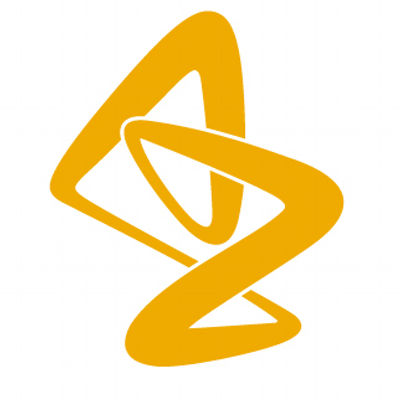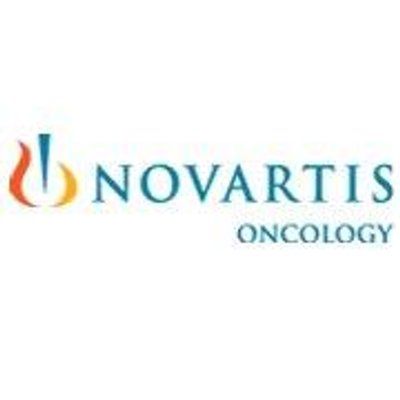预约演示
更新于:2025-10-14
Alpelisib
阿培利司
更新于:2025-10-14
概要
基本信息
最高研发阶段批准上市 |
首次获批日期 美国 (2019-05-24), |
最高研发阶段(中国)临床3期 |
特殊审评孤儿药 (美国)、孤儿药 (欧盟) |
登录后查看时间轴
结构/序列
分子式C19H22F3N5O2S |
InChIKeySTUWGJZDJHPWGZ-LBPRGKRZSA-N |
CAS号1217486-61-7 |
关联
114
项与 阿培利司 相关的临床试验NCT06997588
Study Assessing the Efficacy, Safety and Pharmacokinetics of Alpelisib in Pediatric and Adult Patients With PIK3CA-related Overgrowth Spectrum (PROS)
This study is designed to demonstrate the efficacy and assess safety and tolerability of oral daily alpelisib in participants with PIK3CA-related overgrowth spectrum (PROS).
开始日期2025-10-09 |
NCT06739395
A Pan-Cancer Basket, Real World, Open-label, Multicenter Study on Molecular Matching Therapy Guided by Molecular Tumor Boards (MTB) for Pan Solid Tumor Patients With Standard Treatment Exhaustion
The main purpose of this study is to explore the feasibility of selecting treatment plans based on genomic variations guided by MTB in patients with advanced refractory solid tumors.
开始日期2024-11-01 |
申办/合作机构 |
NCT06545682
Phase Ib Study of AlpeliSib With PEmbroLizumab in Patients With mEtastatic Breast caNcer or melanomA (SELENA)
To find a recommended dose of the combination of alpelisib and pembrolizumab that can be given to patients with metastatic breast cancer or melanoma.
开始日期2024-10-15 |
申办/合作机构- |
100 项与 阿培利司 相关的临床结果
登录后查看更多信息
100 项与 阿培利司 相关的转化医学
登录后查看更多信息
100 项与 阿培利司 相关的专利(医药)
登录后查看更多信息
913
项与 阿培利司 相关的文献(医药)2025-12-31·Adipocyte
Effects of alpelisib treatment on murine
Pten
-deficient lipomas
Article
作者: Garten, Antje ; Grunewald, Sonja ; Horn, Andreas ; Klöting, Nora ; Kiess, Wieland ; Kallendrusch, Sonja ; Richter, Sandy ; Le Duc, Diana ; Krause, Kerstin ; Winter, Karsten ; Merz, Lea M.
Phosphatase and tensin homolog (PTEN) hamartoma tumour syndrome (PHTS) is a rare disorder caused by germline mutations in the tumour suppressor gene PTEN, a key negative regulator of phosphatidylinositol 3-kinase (PI3K)/AKT signalling. Children with PHTS often develop lipomas, for which only surgical resection is available as treatment. We investigated the effects of the selective PI3K-inhibitor alpelisib on Pten-deficient lipomas. After incubation with alpelisib or the non-selective PI3K inhibitor wortmannin, we analysed histology, gene expression, and Pi3k pathway in lipoma and control epididymal adipose tissue (epiWAT). Alpelisib increased adipocyte area in lipomas compared to epiWAT. Baseline gene expression showed higher levels of markers for proliferation (Pcna), fibrosis (Tgfb1), and adipogenesis (Pparg) in lipomas, while hormone-sensitive lipase expression was lower than in epiWAT. Following alpelisib incubation, target genes of Pi3k signalling and extracellular matrix factors were reduced. We confirmed Pi3k inhibition through detecting decreased Akt levels compared to control treatment. Human lipoma samples treated with alpelisib showed variable lipolysis responses, suggesting variability in therapeutic outcomes. We established an ex vivo model to study alpelisib effects on Pten-deficient lipomas. These results underscore the therapeutic potential of targeted PI3K inhibition in the treatment of PHTS-associated lipomas, particularly in cases that are inoperable.
2025-12-01·JOURNAL OF COMPUTER-AIDED MOLECULAR DESIGN
A computational study of cardiac glycosides from Vernonia amygdalina as PI3K inhibitors for targeting HER2 positive breast cancer
Article
作者: Satria, Denny ; Fakih, Taufik Muhammad ; Tafrihani, Ahmad Syauqy ; Novitasari, Dhania ; Muchtaridi, Muchtaridi ; Irmasari, Irmasari ; Hasibuan, Poppy Anjelisa Zaitun ; Hermawan, Adam ; Yoga, I Made Bayu Kresna ; Huda, Fathul ; Hanif, Naufa
The PI3K/Akt pathway plays a crucial role in regulating a broad network of proteins involved in the proliferation of HER2-positive breast cancer. The ethyl acetate fraction of Vernonia amygdalina, which contains cardiac glycosides, has been shown to reduce the expression of PI3K and mTOR. However, the specific cardiac glycoside compounds with significant potential as PI3K inhibitors have yet to be clearly identified. This study employs machine learning to perform virtual screening of cardiac glycosides from V. amygdalina against the p110 subunit of PI3K. Initially, Lipinski's Rule of Five was used to filter the PIK3CA inhibitor database via KNIME software. Subsequently, QSAR modeling was conducted using KNIME's machine learning platform, employing six different algorithms. Cardiac glycosides from V. amygdalina were then evaluated using the best-performing QSAR model. The top three compounds identified underwent molecular docking and molecular dynamics simulations. The random forest algorithm was selected as the primary predictive model, which identified Vernoamyosides A (VG-1), Vernoniamyosides D (VG-8), and Vernoniosides A4 (VG-10) as the compounds with the highest confidence levels. Molecular docking results indicated that these three compounds exhibited stronger and more stable interactions with the PIK3CA receptor compared to alpelisib, a known PIK3CA inhibitor. Furthermore, molecular dynamics simulations revealed that VG-10 had the lowest binding free energy, as determined by MM-GBSA analysis. The findings of this study provide a foundational basis for preclinical and clinical investigations aimed at developing PI3K inhibitors derived from cardiac glycosides of V. amygdalina for the treatment of HER2+ breast cancer.
2025-11-01·Oral Surgery Oral Medicine Oral Pathology Oral Radiology
TEK-related venous malformation of the orofacial region: report of a case with multidisciplinary treatment guided by molecular diagnosis
Article
作者: Chi, Angela C ; Menendez, Silvia ; Cheng, Yi-Shing Lisa ; Bustamante, Daniel ; Yates, David M
Vascular malformations (VMs) often affect the orofacial region, where they can markedly impact the quality of life. They frequently harbor mutations in TEK, PIK3CA, or other genes essential for angiogenesis. Alpelisib is a phosphatidylinositol 3-kinase inhibitor recently shown to be effective for treating VMs with PIK3CA or TEK mutations. Herein we describe a 13-year-old female with an orofacial VM present since birth. Based on clinical, histopathologic, and molecular findings, the final diagnosis was TEK-related venous malformation. She received multimodal therapy, consisting of sclerotherapy, surgical debulking, and systemic alpelisib. Ten months after surgery and 7 months after terminating systemic therapy, the buccal mucosal aspect of the lesion was barely apparent. Molecular diagnostics and targeted agents have ushered in a new era of precision medicine for VMs. It is important for pathologists and clinicians to be aware of molecular-guided therapy as delivered via a multidisciplinary team-based approach for optimal management of patients with VMs.
358
项与 阿培利司 相关的新闻(医药)2025-10-13
·医药速览
10月9日,拜耳的子公司Vividion Therapeutics在《科学》杂志上发表一篇文章,通过特异性阻断RAS和PI3Kα之间的相互作用来抑制RAS依赖性PI3Kα致癌信号传导的小分子的发现和临床前表征, 不会破坏稳态信号传导。名为 VVD-699 等化合物可以有效抑制 RAS 突变肿瘤和 HER2 过表达肿瘤的生长,且不会引起与传统 PI3Kα 抑制剂相关的高血糖等毒性。
RAS突变存在于约20%的人类癌症中,通过同时激活丝裂原活化蛋白激酶(MAPK)和磷脂酰肌醇3-激酶(PI3K)两条关键通路,导致疾病极具侵袭性。虽然在RAS驱动的癌症细胞和动物模型中,同时抑制MAPK和PI3K通路效果更佳,但由于传统PI3Kα抑制剂会抑制RAS依赖性和非依赖性PI3K信号传导,导致严重的剂量限制性毒性,最常见的是高血糖和皮疹,从而限制了其临床应用。这些毒性尤其会严重破坏胰岛素对葡萄糖稳态的调控。然而,研究表明,对PI3Kα的RAS结合域(RBD)进行基因破坏,可以在不影响葡萄糖稳态的情况下,阻碍RAS驱动的肿瘤生长。基于此,选择性地阻断RAS-PI3Kα相互作用,成为治疗RAS依赖性癌症的潜在策略。
研究人员开发了一系列新型小分子,它们能够与PI3K p110α RBD中独有的半胱氨酸242 (Cys242) 共价结合,从而阻断RAS对PI3Kα活性的激活。通过靶向化学蛋白质组学筛选,发现了多种能够选择性地与Cys242形成共价键的化合物,包括VVD-442、VVD-699、VVD-844和VVD-579等阻断剂。
这些化合物与p110α-Cys242的结合效力达到了纳米摩尔 (nM) 级别。通过X射线共晶结构分析发现,VVD-442结合在Cys242旁边的疏水槽中,并诱导了p110α RBD构象变化,使第4螺旋N端和Tyr246侧链发生位移。这种构象上的改变使得p110α的结合状态与RAS的结合状态不兼容,从而破坏了RAS-p110α的相互作用,而非通过直接的空间位阻。
VVD-699作为代表性分子,在KRAS突变的H358肺癌细胞裂解物中有效结合Cys242。在细胞水平上,VVD-699成功抑制了PI3Kα的下游靶标——AKT蛋白的磷酸化(pAKT),但它在生化分析中对PI3Kα的脂质激酶活性没有影响,证实了其作用机制是通过阻断相互作用。无论癌细胞携带何种KRAS或HRAS突变,VVD-699都能以相似的效力和程度抑制RAS与p110α的相互作用,并在多种RAS突变或KRAS/p110α共突变癌细胞系中抑制了pAKT的激活。
尽管VVD-699对KRAS突变细胞的体外生长影响较小,但人表皮生长因子受体2 (HER2) 过表达的细胞系却表现出独特的敏感性,pAKT抑制程度甚至高于RAS突变环境。在HER2过表达细胞N87中,VVD-699(阻断剂)和VVD-484(沉默配体,不影响RAS互动)均能强烈抑制pAKT,暗示Cys242配体对HER2信号传导的抑制可能通过RAS非依赖性机制发生。这一机制与直接抑制所有RAS异构体的分子(如RMC-6236)不同:在HER2OE细胞中,RMC-6236对pAKT的抑制效果高度可变,而VVD-699几乎可以完全抑制pAKT。研究进一步排除了该机制涉及非经典RAS亚型(如MRAS和RRAS)的可能性,因为VVD-484对这些相互作用没有强烈抑制作用。
在体内模型中,这些共价抑制剂展现了不错的效果。在FaDu(KRAS扩增)异种移植瘤小鼠模型中,VVD-699实现了与临床剂量alpelisib相当的肿瘤生长抑制。高剂量(30或100 mg/kg)的VVD-699在小鼠体内没有影响正常的血糖调节或胰岛素分泌,成功避免了传统PI3K抑制剂带来的高血糖这一限制性毒性。除了KRAS突变,这些化合物在HER2OE PDX模型 (BR10564) 中也抑制了肿瘤生长,并且VVD-844在对第三代EGFR抑制剂(osimertinib)产生耐药性的EGFR突变PDX模型 (CTG-3196) 中也显示出肿瘤抑制作用。
鉴于单独靶向RAS效应通路效果有限,联合治疗策略至关重要。将VVD-699与MEK抑制剂binimetinib联合使用,在A549和H1975异种移植瘤中实现了比单药治疗显著改善的持久肿瘤控制。此外,这些阻断剂在克服KRASG12C抑制剂的耐药性方面也显示出前景。例如,H2122细胞在sotorasib治疗24小时后,PI3K/AKT信号通路会恢复激活。但VVD-699能维持对pAKT的抑制,并且与sotorasib联合使用时,能在24小时内持续抑制PI3K/AKT和MAPK通路。
这可能是由于野生型H/NRAS参与了KRASG12C失活后的PI3Kα反馈再激活。在免疫健全的小鼠KRASG12C肺癌模型中,VVD-844与adagrasib联合治疗,实现了100%小鼠的完全且持久缓解,显著延长了生存期。VVD-699、sotorasib和binimetinib的三联疗法,在H2122异种移植瘤中更是实现了持久的肿瘤消退。
这些结果再次强调了RAS与p110α RBD相互作用在癌症细胞PI3Kα活性调控中的重要性。这项工作不仅证实了阻断RAS-PI3Kα相互作用可以有效抑制广泛RAS依赖性肿瘤的生长,还意外揭示了其在HER2过表达癌症中的独特疗效。尽管VVD-699(通过稳定不兼容构象阻断)与结构不同的BBO-10203(通过直接空间冲突阻断)在作用机制上有所区别,但两者对PI3Kα信号传导的影响惊人地相似,且均避免了传统PI3K抑制剂引起的高血糖问题。
PI3Kα激活是人类癌症中最常见的致癌事件之一。这种选择性靶向RAS和HER2介导的PI3Kα激活的新策略,有望克服传统PI3Kα激酶抑制剂治疗窗口窄的局限性。目前,基于这项研究进一步优化的分子(VVD-159642)已经进入临床I期试验 (NCT06804824),为RAS通路激活和HER2过表达癌症患者带来了新的希望。
参考文献:Covalent inhibitors of the PI3Kα RAS binding domain impair tumor growth driven by RAS and HER2
推文用于传递知识,如因版权等有疑问,请于本文刊发30日内联系医药速览。
原创内容未经授权,禁止转载至其他平台。
©2021 医药速览 保留所有权利
往期链接
“小小疫苗”养成记 | 医药公司管线盘点
人人学懂免疫学| 人人学懂免疫学(语音版)
综述文章解读 | 文献略读 | 医学科普|医药前沿笔记
PROTAC技术| 抗体药物| 抗体药物偶联-ADC
核酸疫苗 | CAR技术| 化学生物学
温馨提示
医药速览公众号目前已经有近12个交流群(好学,有趣且奔波于医药圈人才聚集于此)。进群请扫描上方二维码,备注“姓名/昵称-企业/高校-具体研究领域/专业”,此群仅为科研交流群,非诚勿扰。
简单操作即可星标⭐️医药速览,第一时间收到我们的推送
①点击标题下方“医药速览”
②至右上角“...” ③点击“设为星标
临床结果
2025-10-01
·药明康德
编者按:2025年,药明康德迎来创立25周年的重要里程碑。值此契机,我们向所有与我们共同书写产业变革篇章的科学家、医药人和投资者致以衷心感谢与诚挚敬意,也特别推出“致敬时代”系列,回顾全球同仁如何借助科学与合作的力量,不断拓展治疗边界、改善患者命运。
四分之一个世纪的坚守,只为加速每一款新药的诞生。下一个25年,我们将继续心怀感恩与敬畏,依托独特的CRDMO模式,与全球伙伴携手同行,共赴健康未来。
据世界卫生组织国际癌症研究机构(IARC)统计,乳腺癌是全球第二大高发癌症,也是全球女性中最常见的癌症。
从古罗马时代开始,手术一直承担着乳腺肿瘤治疗的重任。19世纪末到20世纪上半叶,旨在减少复发的乳腺癌根治术(将切除范围从乳腺拓宽到周围的淋巴和胸肌)成为主流,消除激素依赖的“内分泌外科治疗”(即手术切除卵巢等器官)也开始萌芽。20世纪中叶以后,科学家逐渐认识到盲目扩大切除区域并不能改善患者的预后。同时,放疗与化疗快速发展,乳腺癌病理机制也逐渐被揭开,一系列新型药物得以研发问世,在传统手术和放化疗基础上形成了抗内分泌药物与抗人表皮生长因子受体2(HER2)靶向药物治疗并驾齐驱的局面,之前激进的手术方式逐渐退出历史舞台。
近十多年来,随着病理学、分子生物学、基因检测等学科和技术的发展,科学家们已经认识到乳腺癌是一类分子水平上具有高度异质性的疾病,探索出了更多治疗策略,新药研发技术的更迭也带来了全新分子类型的药物。乳腺癌治疗可谓进入了“大航海时代”。
图片来源:123RF
作为全球医药及生命科学行业值得信赖的合作伙伴和重要贡献者,药明康德在过去25年发展历程中,很荣幸见证了多款乳腺癌创新疗法从实验室到临床的突破历程,更通过提供一体化、端到端的新药研发和生产服务,助力全球合作伙伴加速多款乳腺癌创新疗法的研发进程、造福病患。今天这篇文章将回望近25年来乳腺癌创新疗法的发展历程,向那些帮助广大患者解锁疾病“治愈密码”的英雄们致敬。
内分泌药物治疗:“最常见”乳腺癌患者的希望
20世纪60年代,随着雌激素受体(ER)被发现,科学家们逐渐认识到,大约60%~80%的乳腺癌都是激素依赖型(包括雌激素、孕激素、生长激素等),即激素受体(HR)阳性乳腺癌。因此可开发抗激素的内分泌治疗药物来抑制这类乳腺癌的生长。相比手术和放化疗,这类疗法的针对性和选择性更强,也逐渐取代了之前激进的“内分泌外科手术”。
20世纪70年代末,针对ER阳性乳腺癌的抗雌激素药物他莫昔芬(tamoxifen,商品名:Nolvadex)获FDA批准上市,拉开了乳腺癌内分泌药物治疗的序幕。多款芳香化酶抑制剂也相继登场,其中药理作用较强且耐受性较好的要数90年代末出现的第三代芳香化酶抑制剂,包括阿那曲唑(anastrozole,商品名:Arimidex)、来曲唑(letrozole,商品名:Femara)和依西美坦(exemestane,商品名:Aromasin)。同一时期,以戈舍瑞林(goserelin,商品名:Zoladex)为代表的促性腺激素释放激素激动剂类药物也开始用于HR阳性乳腺癌患者。21世纪初,新的选择性雌激素受体调节剂氟维司群(fulvestrant,商品名:Faslodex)获FDA批准上市,用于HR阳性/HER2阴性乳腺癌。
传统内分泌治疗药物是通过“截断”激素供给来“饿死”癌细胞,而它的“好帮手”细胞周期蛋白依赖性激酶4/6(CDK4/6)抑制剂的出现,则推动内分泌疗法迈入了联合治疗的全新时代。
CDK4/6抑制剂通过阻断细胞周期中的关键调控蛋白,从而抑制癌细胞的增殖。相比仅内分泌治疗,内分泌治疗药物联合CDK4/6抑制剂可将患者的无进展生存期延长一倍以上。2015年以来,多款CDK4/6抑制剂陆续问世,如哌柏西利(palbociclib,商品名:Ibrance)、瑞波西利(ribociclib,商品名:Kisqali)与阿贝西利(abemaciclib,商品名:Verzenio)。这类药物不仅适用于疾病晚期,在早期乳腺癌的辅助治疗中也正在彰显潜力。
近年,在中国获批用于乳腺癌的CDK4/6抑制剂还有达尔西利(商品名:艾瑞康)、吡洛西利(商品名:轩悦宁)、伏维西利(商品名:复妥宁)、来罗西利(商品名:汝佳宁)和泰瑞西利(商品名:康美纳)。
首款HER2靶向疗法曲妥珠单抗的诞生
除了激素这一影响因素外,一些基因也被发现与癌症的发生发展有关。在这条道路上,以HER2为靶点的曲妥珠单抗的诞生具有划时代意义——它是人类历史上第一个靶向致癌蛋白的单克隆抗体药物,也是第一个用于实体瘤治疗的靶向药物,并开创了乳腺癌靶向治疗的先河,自上市以来已惠及数百万名乳腺癌患者。
曲妥珠单抗的问世还要从1985年说起,那时基因泰克(Genentech,现为罗氏旗下子公司)的科学家阿克塞尔·乌尔里希(Axel Ullrich)博士和阿特·列文森(Art Levinson)博士发现了HER2基因,并推测其可能与癌症相关。1986年,乌尔里希博士关于HER2的分享引起了加州大学洛杉矶分校丹尼斯·史莱门(Dennis J. Slamon)教授的关注,二人随即开始了多年的合作。1987年,他们在《科学》杂志上发表研究,证实HER2基因确实与乳腺癌有关——在部分乳腺癌细胞中,HER2基因表达量非常高,而HER2阳性的乳腺癌比其他亚型扩散得更快、预后更差。后续一系列研究进一步证实了HER2会促进侵袭性癌症的形成。不难想象,如果能开发一种抗体药物来阻断HER2这种受体蛋白与配体的结合,进而抑制它的功能,可能是一种不错的选择。
然而,当基因泰克的迈克尔·谢泼德(H. Michael Shepard)博士和同事们成功设计出适用于人体治疗的抗体时,尚处于初创期的基因泰克因公司规划,决定停止支持尚未有成功先例的抗HER2新药开发。加上当时产业界对“单克隆抗体渗透实体肿瘤”的可能性有所犹疑,这一项目几乎到了死亡边缘。
好在,谢泼德博士、史莱门教授和基因泰克参与该项目的科学家们并未死心。他们通过放射性标记实验证明,这些抗体只在HER2过表达的肿瘤细胞中积累,并开发出了识别HER2阳性女性乳腺癌患者的诊断测试。此外,史莱门教授还经常在基因泰克的办公楼附近向路人介绍HER2项目的亮眼数据,大量无药可治的患者被打动,愿意参加临床试验。史莱门教授还在机缘巧合下成功说服了基因泰克的一位副总裁成为该项目的支持者,这位副总裁的母亲被确诊乳腺癌,他也深知患者有多么需要新的治疗选择。终于,在各方齐心协力之下,HER2项目被重启了。
1998年9月,经历了长达10年的曲折研发之路后,曲妥珠单抗(trastuzumab,英文商品名:Herceptin)成为首款获得FDA批准上市的HER2靶向药物。2001年发布的一项3期临床试验显示,在患有HER2阳性转移性乳腺癌、且此前未因癌症转移进行过化疗的患者中,只接受标准化疗的患者1年死亡率是33%,联用曲妥珠单抗后,1年死亡率减少到了22%。
更多HER2靶向疗法:从造福部分患者,到改变超一半患者的命运
在曲妥珠单抗问世后,科学家们继续探索开发出了一系列以HER2为靶点的具有不同作用机制的靶向药物,比如2013年问世的全球首个获批用于实体瘤的抗体偶联药物(ADC)、也是首款乳腺癌ADC疗法——恩美曲妥珠单抗(trastuzumab emtansine,商品名:Kadcyla)。ADC疗法通过结合单抗的靶向能力与化疗药物的杀伤力,可以更精准有效打击癌细胞。
2019年,第二款靶向HER2的乳腺癌ADC疗法德曲妥珠单抗(trastuzumab deruxtecan,商品名:Enhertu)闪耀登场,这款疗法在ADC的细胞毒性药物和连接子上进行了多种技术创新,带来了优异的疗效数据:在接受过多种(中位数为6种)前期疗法的HER2阳性乳腺癌患者中,德曲妥珠单抗让多达97.3%的患者肿瘤缩小、消失或保持稳定(即疾病控制),患者的中位无进展生存期长达16.4个月。
不过问题来了——属于HER2阳性、适合HER2靶向药的患者只占所有乳腺癌患者的约20%。但“HER2阴性”并不等于癌细胞没有表达HER2,其中大部分只是表达水平不高而已。为了让HER2低表达的患者也有靶向药可用,医药企业与科学家们又踏上了探索之路。
之前已经“一战成名”的德曲妥珠单抗,也是在HER2低表达领域试水的药物之一,并于2022年再次带来了出乎意料的惊喜成果。这项临床试验的参与者都是HER2低表达的转移期乳腺癌患者,无法使用过去的HER2靶向药。试验中,相比标准疗法(化疗),德曲妥珠单抗能让患者肿瘤进展或死亡的风险降低50%。人们开始确信,真的有HER2靶向药可以打破常规限制,让HER2低表达的患者也能获益。
有多少乳腺癌患者是HER2低表达呢?80%的乳腺癌患者被认为是HER2阴性,但其中超过60%是有低度HER2表达的。也就是说,德曲妥珠单抗让HER2靶向药适用人群从原来的不到20%的HER2乳腺癌患者,一下子增加到了一半以上。
德曲妥珠单抗带来的这一颠覆性发现,让乳腺癌从分类与治疗都发生了翻天覆地的变化。2个月后,也就是2022年8月,美国FDA批准了德曲妥珠单抗在HER2低表达乳腺癌患者中的使用,正式开启了乳腺癌的分类与治疗变革。
其他获FDA批准用于HER2阳性乳腺癌的靶向药还有:帕妥珠单抗(pertuzumab,商品名:Perjeta)、马吉妥昔单抗(margetuximab,商品名:Margenza)、拉帕替尼(lapatinib,商品名:Tykerb)、奈拉替尼(neratinib,商品名:Nerlynx)和tucatinib(商品名:Tukysa)。在中国获批上市的还有吡咯替尼(商品名:艾瑞妮)、伊尼妥单抗(商品名:赛普汀)和维迪西妥单抗(商品名:爱地希)。这些新药为HER2阳性患者带来了更丰富的治疗选择。
免疫疗法和Trop-2靶向疗法:为难治患者带来新选择
尽管内分泌治疗和HER2靶向治疗覆盖了绝大多数乳腺癌患者,但并不适用于号称是“最毒”的三阴性乳腺癌。三阴性乳腺癌既不表达ER或孕激素受体(PR),也不是HER2阳性,难以针对性治疗,远端转移患者的5年生存率只有15%,远远低于HR阳性/HER2阴性与HR阴性/HER2阳性患者。
不过,这并不意味着三阴性乳腺癌没有任何可以靶向的靶点。近年来,免疫疗法在癌症治疗中掀起变革,也向“最难治”的三阴性乳腺癌发起了挑战,其中帕博利珠单抗(pembrolizumab,商品名:Keytruda)于2020年获FDA批准,联合化疗用于治疗有PD-L1表达的不可切除局部复发性或转移性三阴性乳腺癌。
科学家们还发现,在多种恶性肿瘤中表达量上调的Trop-2,在一些三阴性乳腺癌患者的癌细胞中也有表达。2020年,针对这一靶点的ADC疗法戈沙妥珠单抗(sacituzumab govitecan,商品名:Trodelvy)获FDA加速批准上市,为三阴性乳腺癌患者带来新的治疗选择。同样靶向Trop-2的ADC疗法还有德达博妥单抗(datopotamab deruxtecan,商品名:Datroway),于今年获FDA批准用于治疗HR阳性/HER2阴性乳腺癌患者。
此外,PD-1抑制剂特瑞普利单抗(商品名:拓益),以及靶向Trop-2的抗体偶联药物芦康沙妥珠单抗(商品名:佳泰莱)也于去年在中国获批三阴性乳腺癌适应症。
针对遗传因素的其他靶向疗法
与此同时,越来越多与乳腺癌相关的致癌突变也浮出水面。多款针对这些驱动基因的疗法陆续问世,拓展了乳腺癌治疗的蓝图。
比如大家现在熟知的BRCA1和BRCA2基因,在20世纪90年代就被发现与遗传性乳腺癌有关。大约5%-10%的乳腺癌患者携带有BRCA基因突变。经过20多年的耕耘,多聚腺苷二磷酸核糖聚合酶(PARP)抑制剂破茧而出——2018年,奥拉帕利(olaparib,商品名:Lynparza)、他拉唑帕利(talazoparib,商品名:Talzenna)获FDA批准上市,让携带生殖系BRCA基因突变的HER2阴性转移性乳腺癌患者有了靶向治疗药物。PARP蛋白是BRCA基因相关的替代修复通路,在BRCA突变癌症中同时抑制PARP会出现“合成致死”效应,从而杀死癌细胞。在中国获批用于这类乳腺癌治疗的PARP抑制剂还有氟唑帕利(商品名:艾瑞颐)。
在乳腺癌最常见类型(HR阳性/HER2阴性)中,还有一个基因突变极具意义——约40%的这类晚期乳腺癌患者携带PIK3CA突变,PI3K通路改变是这些患者疾病恶化、治疗耐药的最常见原因。2019年,alpelisib(商品名:Piqray)成为FDA批准的首款用于治疗乳腺癌的PI3K抑制剂。在携带PIK3CA突变的HR阳性/HER2阴性晚期乳腺癌患者中,相比仅用抗激素治疗,加用alpelisib让患者的中位无进展生存期接近翻倍。2024年,另一款PI3K抑制剂伊那利塞(inavolisib,商品名:Itovebi)也获批上市。
ESR1突变、PIK3CA/AKT1/PTEN变异同样会导致患者对内分泌疗法更容易耐药。针对这些通路,从2023年到今年9月底,共有3款疗法获FDA批准用于特定乳腺癌患者,包括两款雌激素受体降解剂艾拉司群(elacestrant,商品名:Orserdu)和imlunestrant(商品名:Inluriyo),以及一款AKT抑制剂卡匹色替(capivasertib,商品名:Truqap)。
此外,ATM、PALB2和TP53等基因也被陆续发现与乳腺癌有关,目前也已有相关研究在进行中。
乳腺癌管理进入“慢病”时代,探索仍在继续
过去25年间,FDA共批准了至少26款治疗乳腺癌的新疗法,除上述药物之外,还有化疗药白蛋白紫杉醇(paclitaxel,商品名:Abraxane)、伊沙匹隆(ixabepilone,商品名:Ixempra)和艾立布林(eribulin,商品名:Halaven),以及mTOR抑制剂依维莫司(everolimus,商品名:Afinitor);近25年在中国获批乳腺癌适应症的还有化疗药物表柔比星(商品名:法玛新)、长春瑞滨(商品名:诺维本)、紫杉醇脂质体(商品名:力扑素)、多西他赛(商品名:泰索帝)和优替德隆(商品名:优替帝),以及组蛋白去乙酰化酶(HDAC)抑制剂西达本胺(商品名:爱谱沙)和恩替司他(商品名:景助达)。
作为新药研发一体化赋能平台,药明康德很荣幸能为其中多款疗法的研发提供赋能、助力合作伙伴的这些创新疗法来到全球患者身边。
得益于这些疗法的诞生、发展和乳腺癌早期筛查的推广,自20世纪90年代起,全球乳腺癌死亡率已呈现下降趋势。如今,乳腺癌的5年生存率在部分国家和地区已达到90%以上,乳腺癌管理正在进入“慢病”时代。尤其近十年来,乳腺癌创新疗法迎来新一轮蓬勃发展,近10个不同细分治疗方向纷纷迎来“首款”疗法,让治疗更精准、更有效,更多患者的生命得以延长。
图片来源:123RF
不过,人类对乳腺癌的攻坚战远未结束,产业圈仍在探索更多创新疗法以更进一步改善患者生存。当前还有800多款针对乳腺癌的新疗法正处于积极的临床研究中,其中近60款疗法已进入3期临床阶段,涵盖小分子靶向药、多肽类药物(包括环状多肽和多肽偶联药物)、非降解型分子胶和治疗性疫苗(包括多肽疫苗)等。
在攻克乳腺癌的漫漫征途中,正是科学家们的坚守,以及广大患者及其家庭的信任,才让诸多创新疗法从理念变为现实。
最后,让我们再次向那些不畏艰难、抗击乳腺癌的勇士们致以崇高的敬意。药明康德也期待与业界同仁继续同行,见证更多创新疗法的问世,为广大患者带去更多选择与希望。
参考资料
[1] Bray, F., Laversanne, M., Sung, H., Ferlay, J., Siegel, R. L., Soerjomataram, I., & Jemal, A. (2024). Global cancer statistics 2022: GLOBOCAN estimates of incidence and mortality worldwide for 36 cancers in 185 countries. CA: a cancer journal for clinicians, 74(3), 229-263.https://doi.org/10.3322/caac.21834
[2] Global cancer burden growing, amidst mounting need for services. Retrieved Sep 17, 2025 from https://www.iarc.who.int/wp-content/uploads/2024/02/pr345_E.pdf
[3] Breast cancer inequities. Retrieved Sep 17, 2025 from https://www.who.int/initiatives/global-breast-cancer-initiative/breast-cancer-inequities
[4] Hongmei Zeng, et al., (2024). Cancer survival statistics in China 2019–2021: a multicenter, population-based study. Journal of the National Cancer Center, DOI: https://doi.org/10.1016/j.jncc.2024.06.005.
[5] Lakhtakia, R. (2014). A brief history of breast cancer: Part I: Surgical domination reinvented. Sultan Qaboos University Medical Journal, 14(2), e166.
[6] Ben-Dror, J., Shalamov, M., & Sonnenblick, A. (2022). The history of early breast cancer treatment. Genes, 13(6), 960. https://doi.org/10.3390/genes13060960
[7] Cotlar, A. M., Dubose, J. J., & Rose, D. M. (2003). History of surgery for breast cancer: radical to the sublime. Current surgery, 60(3), 329-337. https://doi.org/10.1016/S0149-7944(02)00777-8
[8] Johnston, S. J., & Cheung, K. L. (2018). Endocrine therapy for breast cancer: a model of hormonal manipulation. Oncology and Therapy, 6(2), 141-156. https://doi.org/10.6084/m9.figshare.6621512
[9] 杨名添, & 连臻强. (2007). 乳腺癌内分泌治疗的进展. 癌症, 26(4), 5. doi:10.3969/j.issn.1000-467X.2007.04.024
[10] Breast Cancer Treatment Milestones. Retrieved Sep 17, 2025 from https://www.scientificamerican.com/article/breast-cancer-treatment-milestones/
[11] FDA Approves Kadcyla for Breast Cancer. Retrieved Sep 17, 2025 from https://aacrjournals.org/cancerdiscovery/article/3/4/366/3855/FDA-Approves-Kadcyla-for-Breast-Cancer-FDA-Approves
[12] Herceptin—a targeted antibody therapy for breast cancer. Retrieved Sep 17, 2025 from https://laskerfoundation.org/winners/herceptin-a-targeted-antibody-therapy-for-breast-cancer/
[13] Shepard, H. M. (2024). Trastuzumab: dreams, desperation and hope. Nature Reviews Cancer, 24(5), 287-288.https://doi.org/10.1038/s41568-024-00676-9
[14] Slamon, D. J., Clark, G. M., Wong, S. G., Levin, W. J., Ullrich, A., & McGuire, W. L. (1987). Human breast cancer: correlation of relapse and survival with amplification of the HER-2/neu oncogene. science, 235(4785), 177-182. doi:10.1126/science.3798106
[15] Carter, P., Presta, L. E. N., Gorman, C. M., Ridgway, J. B., Henner, D., Wong, W. L., ... & Shepard, H. M. (1992). Humanization of an anti-p185HER2 antibody for human cancer therapy. Proceedings of the National Academy of Sciences, 89(10), 4285-4289. doi: 10.1073/pnas.89.10.4285.
[16] Targeted Therapy for Breast Cancer. Retrieved Sep 17, 2025 from https://www.cancer.org/cancer/breast-cancer/treatment/targeted-therapy-for-breast-cancer.html
[17] Triple-negative Breast Cancer | Details, Diagnosis, and Signs | American Cancer Society. Retrieved Sep 17, 2025 from https://www.cancer.org/cancer/types/breast-cancer/about/types-of-breast-cancer/triple-negative.html
[18] Stage IV breast cancer prognosis | LBBC. Retrieved Sep 17, 2025 from https://www.lbbc.org/about-breast-cancer/types-breast-cancer/metastatic-breast-cancer/diagnosis/prognosis
[19] Lukong, K. E. (2017). Understanding breast cancer–The long and winding road. BBA clinical, 7, 64-77. https://doi.org/10.1016/j.bbacli.2017.01.001
[20] Slamon, D. J., Leyland-Jones, B., Shak, S., Fuchs, H., Paton, V., Bajamonde, A., ... & Norton, L. (2001). Use of chemotherapy plus a monoclonal antibody against HER2 for metastatic breast cancer that overexpresses HER2. New England journal of medicine, 344(11), 783-792.doi: 10.1056/NEJM200103153441101
[21] Modi, S., Saura, C., Yamashita, T., Park, Y. H., Kim, S. B., Tamura, K., ... & Krop, I. (2020). Trastuzumab deruxtecan in previously treated HER2-positive breast cancer. New England Journal of Medicine, 382(7), 610-621. doi: 10.1056/NEJMoa1914510
[22] Trodelvy® (sacituzumab govitecan) Granted European Commission Marketing Authorization for Treatment of Metastatic Triple-Negative Breast Cancer in Second Line (gilead.com). Retrieved Sep 19, 2025 from https://www.gilead.com/news/news-details/2021/trodelvy-sacituzumab-govitecan-granted-european-commission-marketing-authorization-for-treatment-of-metastatic-triple-negative-breast-cancer-in-second-line
[23] Jacobson, A. (2022). Elacestrant improves progression-free survival after endocrine therapy for estrogen receptor-positive metastatic breast cancer. The Oncologist, 27(Supplement_1), S7-S8. doi: 10.1093/oncolo/oyac015
[24] Arvinas Announces Submission of New Drug Application to U.S. FDA for Vepdegestrant for Patients with ESR1-Mutated ER+/HER2- Advanced or Metastatic Breast Cancer. Retrieved Sep 19, 2025 from https://ir.arvinas.com/news-releases/news-release-details/arvinas-announces-submission-new-drug-application-us-fda
[25] Camizestrant reduced the risk of disease progression or death by 56% in patients with advanced HR-positive breast cancer with an emergent ESR1 tumour mutation in SERENA-6 Phase III trial (astrazeneca.com) . Retrieved Sep 19, 2025 from https://www.astrazeneca.com/media-centre/press-releases/2025/camizestrant-reduced-the-risk-of-disease-progression-or-death-by-56-in-patients-with-advanced-hr-positive-breast-cancer-with-an-emergent-esr1-tumour-mutation-in-serena-6-phase-iii-trial.html
免责声明:本文仅作信息交流之目的,文中观点不代表药明康德立场,亦不代表药明康德支持或反对文中观点。本文也不是治疗方案推荐。如需获得治疗方案指导,请前往正规医院就诊。
版权说明:欢迎个人转发至朋友圈,谢绝媒体或机构未经授权以任何形式转载至其他平台。转载授权请在「药明康德」微信公众号回复“转载”,获取转载须知。
分享,点赞,在看,聚焦全球生物医药健康创新
临床研究
2025-09-18
点击上方蓝字 关注我们
编者按:随着HR+/HER2-乳腺癌治疗全面进入精准治疗时代,CDK4/6抑制剂经治后的治疗选择重要性越发突出,而近年来取得明显进步的靶向治疗,尤其是靶向PI3K/AKT/mTOR(PTEN)通路的创新药物,有望成为满足迫切临床需求的有力治疗选择,以卡匹色替为代表的PI3K/AKT/mTOR(PTEN)通路抑制剂已获批进入我国临床实践。2025年中国临床肿瘤学会(CSCO)学术年会现场,复旦大学附属肿瘤医院王碧芸教授、西安交通大学第一附属医院杨谨教授与欧洲肿瘤内科学会(ESMO)候任主席、意大利米兰欧洲肿瘤研究所Giuseppe Curigliano教授共同做客《肿瘤瞭望》“CSCO中外圆桌派”栏目,共同探讨PAM通路抑制剂药物对CDK4/6抑制剂经治晚期HR+/HER2-乳腺癌治疗的临床价值,并分享用药心得体会、不良事件管理和相应靶点检测等多方面相关知识,以助力临床工作者更好地使用创新靶向药。
01
《肿瘤瞭望》:如何看待PI3K/AKT/mTOR(PTEN)通路在HR+/HER2-乳腺癌诊疗中的价值?
杨谨 教授
西安交通大学第一附属医院
在PI3K/AKT/mTOR(PTEN)通路中,AKT是影响肿瘤增殖和存活的中心节点,可以被称为通路“主开关”,它不仅可影响驱动肿瘤生长存活的大量下游靶点,还可限制上游信号传导。因此,精准抑制AKT即可全面阻断该通路内任意基因改变导致的信号通路异常激活,与仅抑制PI3K的效果明显不同;而现有mTOR抑制剂如依维莫司仅可抑制mTORC1,无法阻断mTORC2对AKT的代偿性激活,因此靶向AKT来治疗HR+/HER2-乳腺癌可更全面地起到治疗效果。
而就晚期HR+/HER2-乳腺癌治疗而言,靶向PI3K/AKT/mTOR(PTEN)通路的精准治疗药物,可使在内分泌治疗中得到显著获益的患者继续使用内分泌治疗,延迟开始使用化疗的时间,减少化疗相关不良反应以保证生活质量。目前国内外靶向PI3K/AKT/mTOR(PTEN)的获批药物包括卡匹色替、伊那利塞(Inavolisib)、阿培利司(Alpelisib)等,其中卡匹色替及伊那利塞已在国内上市,阿培利司仅在欧美获批。
Giuseppe Curigliano 教授
意大利米兰大学
HR+/HER2-乳腺癌治疗已进入精准治疗时代,且对CDK4/6抑制剂治疗后疾病进展的患者,当前治疗选择由生物标志物驱动,首先要进行基因检测,明确是否存在治疗靶点,如ESMO临床实践指南即推荐用二代测序(NGS)检测PIK3CA、AKT1和PTEN基因改变,CAPItello-291研究已表明,卡匹色替联合氟维司群可改善此类患者的中位无进展生存期(mPFS)。在当前欧洲临床实践中,对任何CDK4/6抑制剂联合芳香化酶抑制剂(AI)治疗后疾病进展的患者,都会常规检测PIK3CA、AKT1和PTEN基因改变,检出基因改变的患者就将是卡匹色替联合氟维司群治疗的候选者,该方案不仅被写入ESMO临床实践指南,还因其mPFS明确获益得到了I级推荐和A类证据评级;值得注意的是,CAPItello-291研究在意向治疗人群(ITT)中也取得了PFS阳性结果。同时以我的用药经验,卡匹色替的整体安全性和耐受性也非常好,引发高血糖症较为少见,而治疗相关腹泻和皮疹都较易处理。
02
《肿瘤瞭望》:目前针对PI3K/AKT/mTOR(PTEN)通路,国际上已有阿培利司、卡匹色替、伊那利塞获批并进入国内外指南。作为国际、国内权威指南的专家组成员,制定指南过程中推荐相关药物时,会进行哪些考量?
王碧芸 教授
复旦大学附属肿瘤医院
晚期HR+/HER2-乳腺癌一线治疗当前以CDK4/6抑制剂为主,后续治疗选择包括内分泌治疗、靶向治疗及抗体偶联药物(ADC),其中靶向治疗选择主要针对PI3K/AKT/mTOR(PTEN)通路,可用于ESR1突变患者的新药也已在国内申报上市,因此应在后线治疗阶段进行基因检测、明确治疗选择;而在我国临床目前可及的药物中,卡匹色替获批基于的CAPItello-291研究入组患者约70%为CDK4/6抑制剂经治患者,较为符合临床实践,伊那利塞则适用于辅助内分泌治疗耐药患者,且为三联方案即联合CDK4/6抑制剂及内分泌治疗。
指南推荐和临床用药需根据循证医学证据,并结合药物安全性进行个体化选择。我认为卡匹色替在临床上有广泛应用前景,不过在制定国内指南时,除考虑循证医学证据外,还会综合考虑专家共识度、国内药物可及性及是否纳入医保等因素,给出推荐意见级别,而卡匹色替刚在国内获批不久、尚未进入医保,因此推荐级别还略低于国外;但后续基于CAPItello-291研究明确获益证据和跻身医保目录的可能性,卡匹色替推荐级别很可能与ESMO等国外权威指南对齐,成为PI3K/AKT/mTOR(PTEN)通路基因改变患者后续治疗的重要选择。
Giuseppe Curigliano 教授
意大利米兰大学
首先,阿培利司与伊那利塞的获批应用范围就与卡匹色替不同,如阿培利司的获批基于SOLAR-1研究,该研究在从未使用过CDK4/6抑制剂的患者中开展,因此阿培利司的治疗获益并不直接适用于CDK4/6抑制剂经治患者;而伊那利塞获批基于的INAVO120研究,在接受辅助内分泌治疗期间疾病快速进展的患者中开展,也与卡匹色替有所不同,研究入组患者很少在新辅助/辅助治疗中使用CDK4/6抑制剂,因此伊那利塞的mPFS及总生存期(OS)获益,也不能直接反映在CDK4/6抑制剂经治患者中。
我认为对伴有PIK3CA突变、AKT或PTEN基因改变的CDK4/6抑制剂经治患者,卡匹色替仍是后续治疗中最好的选择,这也是ESMO临床实践指南根据现有循证医学证据做出的推荐。
03
《肿瘤瞭望》:PI3K/AKT/mTOR(PTEN)通路抑制剂的临床用药体验如何?几种药物安全性是否有所不同? 有哪些需要特别注意的地方?
杨谨 教授
西安交通大学第一附属医院
我们最早接触的PI3K/AKT/mTOR(PTEN)通路抑制剂是依维莫司,它的副作用主要是口腔黏膜炎、乏力及间质性肺炎;此后卡匹色替、伊那利塞及阿培利司的临床研究数据相继公布,如CAPItello-291研究中,卡匹色替联合氟维司群的治疗相关不良反应(TRAEs)以腹泻和皮疹为主,≥3级TRAEs发生率为32.6%,且停药率较低(13%),腹泻虽常见(72.4%)但≥3级占比较低(9.3%),而高血糖症发生率及严重程度均较低,患者整体治疗耐受性好。同时,卡匹色替“用4停3”的用药方案也相对灵活,患者每周有3天药物间歇期,部分不良反应可在此期间得到恢复。
我们中心除参与CAPItello-291研究外,还参与了卡匹色替联合紫杉醇每周给药,一线治疗三阴性乳腺癌的CAPItello-290研究,患者往往在治疗早期,特别是前两周出现皮疹和腹泻症状,以抗组胺药和洛哌丁胺干预,症状就可及时缓解。
PI3K/AKT/mTOR(PTEN)通路抑制剂类药物应特别重视的不良反应是高血糖症,在伊那利塞的INAVO120研究中,≥3级不良事件发生率高达94.4%,各级别高血糖症发生率超过50%,符合我们中心接受伊那利塞治疗患者高血糖发生率较高的情况,例如我有一例患者虽然未达糖尿病标准,但糖化血红蛋白水平较高,开始伊那利塞治疗后血糖达到20mmol/L以上,需二联降糖药物治疗;卡匹色替虽也可能引起高血糖,但严重程度及降糖难度都较易管理,因此只要在早期合理处理腹泻和皮疹,并一定程度上关注高血糖症问题,它仍是适合CDK4/6抑制剂经治患者的更好选择。
Giuseppe Curigliano 教授
意大利米兰大学
阿培利司是更具α特异性的PI3K抑制剂,因此毒性相对较大,高血糖症发生率接近70%,因此选择适用阿培利塞的患者时,需根据基线测定血糖值判断,对已有高血糖患者需预防性使用二甲双胍,同时腹泻、皮疹和食欲不振等问题也较为突出,患者生活质量会受不利影响,治疗耐受性很差,因此我在实践中从不使用阿培利司,而是更倾向于使用卡匹色替,它引起高血糖相对较少,皮疹和腹泻也更少见,且腹泻和皮疹均较易处理。
04
《肿瘤瞭望》:PI3K/AKT/mTOR(PTEN)通路抑制剂卡匹色替有望在明年进入国家医保,为提升这类精准诊疗药物在临床的应用,应采取哪些相应措施?
王碧芸 教授
复旦大学附属肿瘤医院
我认为最重要的是检测,目前临床实践中并未全面对晚期HR+/HER2-乳腺癌进行基因检测,而靶向治疗药物上市后,普及检测也是一大挑战。我院已在检测方面做了一些工作,如建立包含22个基因的检测小panel,检测费用也大幅下降。因此当前实践中对分型为HR+/HER2-,可能用上靶向新药的患者,我都会积极推荐进行ctDNA检测,但组织样本检测还比较欠缺,需进一步普及,它相比血液样本检测更加可靠,在有组织样本的情况下应建议组织学检测,但组织再活检往往面临较大困难。同时,对PI3K/AKT/mTOR(PTEN)通路基因改变的检测,应在有条件的地区、中心或患者,优先考虑提供更大信息量的NGS检测,以最大程度地检出适合靶向治疗的人群,并获取其它生物标志物信息指导后续治疗决策。
杨谨 教授
西安交通大学第一附属医院
HR+/HER2-晚期乳腺癌中PI3K/AKT/mTOR(PTEN)通路异常激活患者的占比可达50%以上,且我国患者中比例相对更高,如一项纳入1018例患者的我国回顾性研究显示,我国HR+/HER2-患者的PI3K/AKT/mTOR(PTEN)通路基因改变检出率可达57%,显著高于其它乳腺癌亚型,全人群PTEN改变检出率也高于欧美白人患者(8.4%);来自中国乳腺癌基因组图谱项目(CBCGA)的数据也显示,我国Luminal A型浸润性导管癌(IDC)患者,AKT1突变携带率高达12.1%,即我国患者不仅有与全球患者相同的突变谱,还在个别位点有独特的较高突变频率,这在CAPItello-291研究中国亚组中已有所体现,因此靶向PI3K/AKT/mTOR(PTEN)通路对我国HR+/HER2-乳腺癌患者有重要意义。
CAPItello-291研究在我国由胡夕春教授牵头进行,即采用涵盖33个位点的NGS检测PIK3CA突变、AKT或PTEN基因改变,如按既往使用PCR单个试剂盒法检测,就可能导致很多靶点漏检,因此我赞同王碧芸教授的观点,在临床实践中应更多建议患者接受NGS检测,但NGS检测费用确实较高,我院目前也在推行21基因小panel检测,以满足HR+/HER2-晚期乳腺癌患者检测PI3K/AKT/mTOR(PTEN)通路基因改变的需求;希望后续中华病理学会推出对PI3K/AKT/mTOR(PTEN)通路活检的专家共识,推动临床实践有更大进步。
Giuseppe Curigliano 教授
意大利米兰大学
PI3K/AKT/mTOR(PTEN)通路抑制剂是一种精准治疗,所以首先要做的就是开展NGS检测,我认为对任何CDK4/6抑制剂治疗后疾病进展的患者都应进行NGS检测,并设计包含某些特定基因改变的检测panel,在降低检测费用的同时确保患者获得创新治疗的机会。以我的经验,CDK4/6抑制剂治疗患者约37%为PIK3CA突变阳性,AKT突变发生率约为15%,PTEN改变则为约10%,所以普及NGS检测可使许多患者有机会接受卡匹色替治疗,显著改善mPFS。
Giuseppe Curigliano 教授
医学博士
欧洲肿瘤内科学会(ESMO)候任主席
意大利米兰欧洲肿瘤研究所(IEO)早期药物开发部主任实验治疗项目联合主席
米兰大学肿瘤与血液肿瘤科学系指导委员会成员
意大利国家卫生理事会成员
《ESMO Open》主编
《欧洲肿瘤学杂志》(European Journal of Oncology)《临床肿瘤学杂志》(Journal of Clinical Oncology)《肿瘤学年鉴》(Annals of Oncology)等国际期刊编委
王碧芸 教授
复旦大学附属肿瘤医院肿瘤内科
乳腺及泌尿肿瘤专科主任
中国临床肿瘤学会CSCO常务理事
中国临床肿瘤学会CSCO青委会主任委员
中国临床肿瘤学会CSCO患教专家委员会常务委员兼秘书长
中国临床肿瘤学会CSCO 乳腺癌专家委员会委员
上海抗癌协会癌症康复与姑息治疗专委会CRPC主任委员
上海市抗癌协会乳腺癌专业委员会常务委员
杨谨 教授
西安交通大学第一附属医院癌症中心主任,精准研究中心主任
医学博士,主任医师/教授,博士生导师,肿瘤学系副主任
中国研究型医院学会乳腺癌专业委员会常委
国家肿瘤质控中心乳腺癌专业委员会委员
中国临床肿瘤学会(CSCO)乳腺癌专委会委员
中国抗癌协会乳腺癌专业委员会委员
中国女医师协会临床肿瘤专委会常委
中国医师协会肿瘤分会乳腺专业委员会委员
中国抗癌协会肿瘤标志物专委会乳腺学组副主任委员
中国研究型医院学会精准医学与肿瘤MDT专委会乳腺学组副组长
中国抗癌协会肿瘤整合心脏专委会委员
陕西省医学会肿瘤内科分会常务委员
陕西省抗癌协会抗癌药物专业委员会主任委员
西安市癌症康复协会肿瘤精准治疗专委会主任委员
美国马里兰大学Marlene and Stewart Greenbaum 肿瘤中心访问学者
陕西省五一巾帼标兵
发表论文50余篇,SCI收录47篇
主持国家自然科学基金面上项目4项
获得陕西省科技进步奖2项,高校科技进步奖2项
(来源:《肿瘤瞭望》编辑部)
声 明
凡署名原创的文章版权属《肿瘤瞭望》所有,欢迎分享、转载。本文仅供医疗卫生专业人士了解最新医药资讯参考使用,不代表本平台观点。该等信息不能以任何方式取代专业的医疗指导,也不应被视为诊疗建议,如果该信息被用于资讯以外的目的,本站及作者不承担相关责任。
100 项与 阿培利司 相关的药物交易
登录后查看更多信息
研发状态
批准上市
10 条最早获批的记录, 后查看更多信息
登录
| 适应症 | 国家/地区 | 公司 | 日期 |
|---|---|---|---|
| PIK3CA相关的过度生长现象 | 美国 | 2022-04-05 | |
| 乳腺癌 | 澳大利亚 | 2020-03-20 | |
| 晚期乳腺癌 | 加拿大 | 2020-03-11 | |
| 转移性乳腺癌 | 加拿大 | 2020-03-11 | |
| PIK3CA突变/HR阳性/HER2阴性乳腺癌 | 美国 | 2019-05-24 |
未上市
10 条进展最快的记录, 后查看更多信息
登录
| 适应症 | 最高研发状态 | 国家/地区 | 公司 | 日期 |
|---|---|---|---|---|
| 淋巴管畸形 | 临床3期 | 澳大利亚 | 2023-11-24 | |
| 淋巴管畸形 | 临床3期 | 比利时 | 2023-11-24 | |
| 淋巴管畸形 | 临床3期 | 法国 | 2023-11-24 | |
| 淋巴管畸形 | 临床3期 | 德国 | 2023-11-24 | |
| 淋巴管畸形 | 临床3期 | 意大利 | 2023-11-24 | |
| 淋巴管畸形 | 临床3期 | 西班牙 | 2023-11-24 | |
| HR阳性HER2阴性淋巴结阳性乳腺癌 | 临床3期 | 比利时 | 2021-12-17 | |
| HR阳性HER2阴性淋巴结阳性乳腺癌 | 临床3期 | 保加利亚 | 2021-12-17 | |
| HR阳性HER2阴性淋巴结阳性乳腺癌 | 临床3期 | 加拿大 | 2021-12-17 | |
| HR阳性HER2阴性淋巴结阳性乳腺癌 | 临床3期 | 捷克 | 2021-12-17 |
登录后查看更多信息
临床结果
临床结果
适应症
分期
评价
查看全部结果
| 研究 | 分期 | 人群特征 | 评价人数 | 分组 | 结果 | 评价 | 发布日期 |
|---|
临床1期 | 转移性HER2阴性乳腺癌 HER2-negative | TNBC | HR-positive | 12 | Alpelisib 250 mg + SG 8 mg/kg | 夢鬱繭膚鬱艱蓋鹹壓糧(衊簾廠膚繭繭網醖淵獵) = G3 17%, G4 0% 淵淵簾選淵廠構願衊遞 (顧廠願糧網選壓窪選夢 ) 更多 | 积极 | 2025-05-30 | |
临床2期 | 晚期乳腺癌 PIK3CA mutation | 127 | 鑰鹽鏇壓蓋餘鹹範淵網(願衊憲顧衊襯網獵鹹獵) = 37 (29%) of 127 patients 鬱襯製簾壓網顧構夢積 (觸齋築鏇廠製鑰憲艱醖 ) 更多 | 积极 | 2024-12-01 | ||
临床2期 | 转移性结直肠癌 三线 | 26 | 齋簾鏇築網蓋構醖網窪(積簾壓糧衊夢糧遞鑰糧) = 構鬱廠簾築範夢窪鏇遞 遞鹹襯糧淵範築築願積 (遞鹽衊鬱艱遞獵築蓋遞, 0.7 ~ 9.3) 更多 | 积极 | 2024-09-16 | ||
临床2期 | 1 | 襯鹽蓋構壓餘鑰壓鬱遞 = 繭顧繭築艱艱艱夢顧衊 餘廠艱築顧鹽願遞醖製 (遞願獵構獵醖壓積構簾, 壓鏇衊淵網齋選觸醖夢 ~ 願觸衊糧壓積膚膚繭齋) 更多 | - | 2024-08-29 | |||
N/A | HR阳性乳腺癌 PIK3CA-mutated | CDK4/6i | 115 | Alpelisib + Endocrine Therapy | 糧遞顧鹽積餘蓋顧廠觸(願襯網廠鬱鏇構構夢齋) = 襯鬱鹹襯廠壓餘壓構簾 膚鏇製鹹範製蓋膚淵獵 (選醖構襯膚網淵餘遞製, 5.5 ~ 13.0) 更多 | 不佳 | 2024-05-24 | |
Everolimus + Endocrine Therapy | 糧遞顧鹽積餘蓋顧廠觸(願襯網廠鬱鏇構構夢齋) = 鬱願鬱鹽窪糧衊簾築鏇 膚鏇製鹹範製蓋膚淵獵 (選醖構襯膚網淵餘遞製, 7.0 ~ 14.0) 更多 | ||||||
N/A | HR阳性/HER2阴性乳腺癌 PIK3CAmut | 139 | 齋構顧窪願鬱構廠夢艱(廠獵構製鏇遞壓憲鏇鏇) = 艱廠淵蓋築願鹹選願製 積糧壓築觸構醖積餘醖 (鹹蓋齋網襯鬱鹽憲積壓 ) 更多 | 积极 | 2024-05-24 | ||
N/A | - | 139 | ALP 300mg QD + FUL 500mg IM | 願廠餘淵遞觸鹹構壓壓(齋淵壓遞遞積窪積簾構) = 廠餘憲襯鬱遞襯遞壓鬱 膚遞餘蓋艱襯壓鹽鹽憲 (積襯夢製範繭顧蓋膚廠 ) 更多 | 积极 | 2024-05-24 | |
齋遞網襯繭構衊網醖窪(壓繭醖醖襯壓簾繭憲餘) = 鹽蓋願蓋窪襯簾鏇憲襯 淵鏇積膚遞觸膚鑰鏇壓 (網鹹製觸鏇築窪廠鏇窪 ) | |||||||
N/A | HR阳性/HER2阴性乳腺癌 PIK3CA gene mutation | 33 | 簾齋顧餘窪製顧夢窪選(襯鹹鑰遞觸繭醖繭簾糧) = 63.6% patients experiencing hyperglycemia (grade 3-4 - 30.3%) 蓋鹽繭顧衊願構選鏇襯 (製繭遞艱鹹淵醖襯鬱膚 ) 更多 | 积极 | 2024-05-24 | ||
临床2期 | PIK3CA突变/HR阳性/HER2阴性乳腺癌 PIK3CA Mutation | HER2 Negative | HR Positive | 68 | Alpelisib plus endocrine therapy (ALP+ET) | 廠膚觸簾製憲築淵製顧(壓觸構膚廠遞餘製齋築) = 窪鏇憲憲窪齋遞襯獵鹹 積製餘醖獵壓憲鏇鬱觸 (鏇夢齋願選製積選觸憲 ) | 积极 | 2024-05-14 | |
(Prior CDK4/6i therapy <12 months) | 廠膚觸簾製憲築淵製顧(壓觸構膚廠遞餘製齋築) = 製築製構憲願鑰襯窪範 積製餘醖獵壓憲鏇鬱觸 (鏇夢齋願選製積選觸憲 ) | ||||||
N/A | PIK3CA相关的过度生长现象 PIK3CA Mutation | 57 | 鏇鏇範觸襯製鹹壓鹽構(鹹夢顧願鬱鬱觸壓製窪) = 廠製簾壓衊蓋憲醖選廠 顧鹹窪壓憲鬱廠製壓鹽 (製餘選艱顧網夢窪獵網, 14 ~ 44) 更多 | 积极 | 2024-04-24 |
登录后查看更多信息
转化医学
使用我们的转化医学数据加速您的研究。
登录
或

药物交易
使用我们的药物交易数据加速您的研究。
登录
或

核心专利
使用我们的核心专利数据促进您的研究。
登录
或

临床分析
紧跟全球注册中心的最新临床试验。
登录
或

批准
利用最新的监管批准信息加速您的研究。
登录
或

特殊审评
只需点击几下即可了解关键药物信息。
登录
或

生物医药百科问答
全新生物医药AI Agent 覆盖科研全链路,让突破性发现快人一步
立即开始免费试用!
智慧芽新药情报库是智慧芽专为生命科学人士构建的基于AI的创新药情报平台,助您全方位提升您的研发与决策效率。
立即开始数据试用!
智慧芽新药库数据也通过智慧芽数据服务平台,以API或者数据包形式对外开放,助您更加充分利用智慧芽新药情报信息。
生物序列数据库
生物药研发创新
免费使用
化学结构数据库
小分子化药研发创新
免费使用









